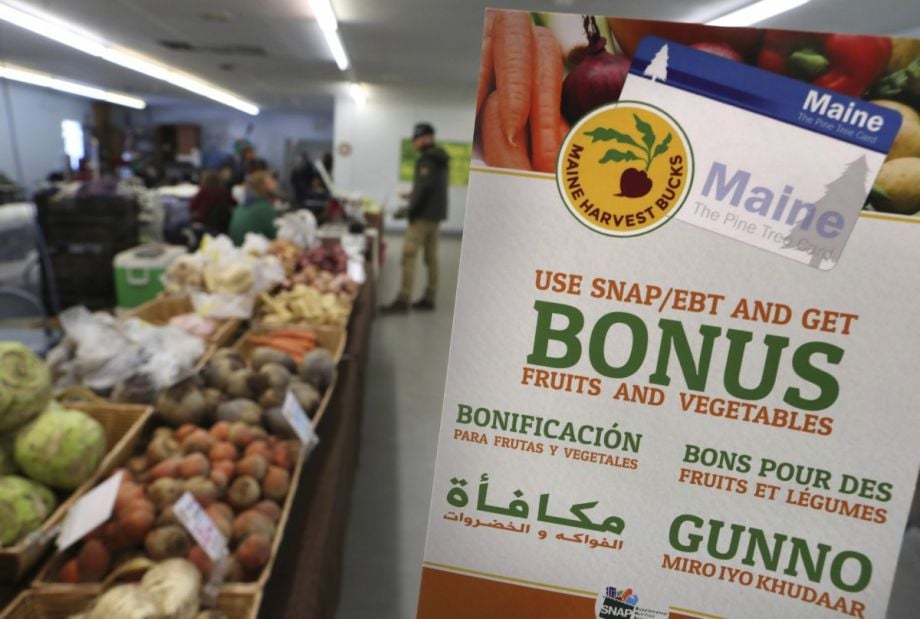With President Donald Trump’s full 2018 budget proposal slated for release tomorrow, the leaks and rumors have already started making headlines. Big cuts to the social safety net, slashing Medicaid and opening the door to other limits are on the table, The Washington Post reported Sunday.
The cuts to the social safety net come at a moment when federal spending on low-income households is back down to its historic average of 2 percent, according to the Center on Budget and Policy Priorities. At the same time, the largest demographic that benefits from that spending are white individuals without a college degree — who overwhelmingly supported Trump in the 2016 election.
Among the favorite targets for reduction or reform: the Supplemental Nutrition Assistance Program, or SNAP, also known as food stamps. The program currently costs around $75 billion a year. An average of 44 million people received SNAP benefits in 2016, down from a peak of 47 million in 2013, the Post reports.
House Speaker Paul Ryan has previously proposed expanding work requirements within the SNAP program. As I’ve reported, such an expansion is needless and potentially harmful. According to the USDA, more than 75 percent of households that include a person who is able to work had a job in the year before or after receiving SNAP. Many who receive the assistance are children or elderly.
Few specific details have been revealed about how SNAP would change. One possibility, turning SNAP into a block grant program, would end the blanket entitlement status it currently holds. Under a block grant program, instead of automatically allocating SNAP benefits to eligible families who apply, the federal government would divvy out a pot of money to each state based on some kind of population or need-based formula, and states would have the flexibility to design their own food assistance programs.
The block grant reform has happened before.
In 1996, when “welfare-to-work” requirements and the Earned Income Tax Credit were first introduced, the nation’s cash assistance program shifted from a blanket entitlement to a block grant, known as Temporary Assistance for Needy Families, or TANF. The results have been clear: a massive reduction in the program’s ability to reach families in need.
When TANF was first instituted, cash assistance reached 68 out of 100 families living in poverty; in 2015 it only reached 23 out of 100, according to the Center on Budget and Policy Priorities. In only five states is that ratio greater than 40 out of 100: Vermont, New York, Minnesota, Oregon and California. Fourteen states had ratios of 10 to 100 or less. Welfare has effectively disappeared from many places in the U.S., leaving 1.5 million households to live on $2 a day or less per person, as I’ve also reported.
Turning TANF into a block grant program also meant it would not expand automatically during a recession, as SNAP was able to expand, especially during the Great Recession. In fact, the base TANF block grant to each state has been frozen since 1996. It hasn’t gone up at all, even as the nation’s population has grown. In fact, due to inflation, its value has gone down by 30 percent.
SNAP could suffer that same fate as TANF, if it were converted into a block grant program.
And that may only be the tip of the iceberg that’s coming to sink the social safety net and other programs, including those that support expanded opportunity to lift families out of poverty. Trump’s Skinny Budget in March, meant to be a preview of this week’s full budget proposal, put Community Development Block Grants, the Community Development Financial Institutions Fund, Section 4 grants that support community-driven planning, and more, on notice.

Oscar is Next City's senior economic justice correspondent. He previously served as Next City’s editor from 2018-2019, and was a Next City Equitable Cities Fellow from 2015-2016. Since 2011, Oscar has covered community development finance, community banking, impact investing, economic development, housing and more for media outlets such as Shelterforce, B Magazine, Impact Alpha and Fast Company.
Follow Oscar .(JavaScript must be enabled to view this email address)















